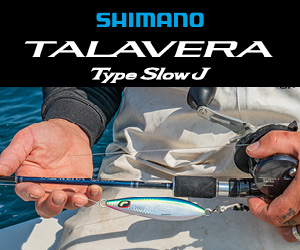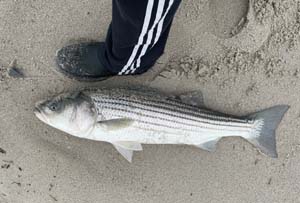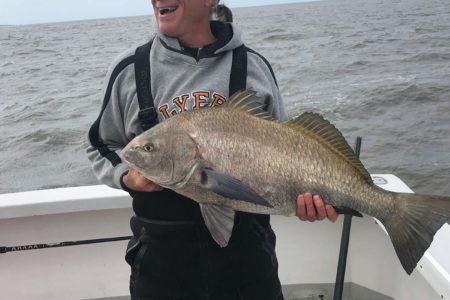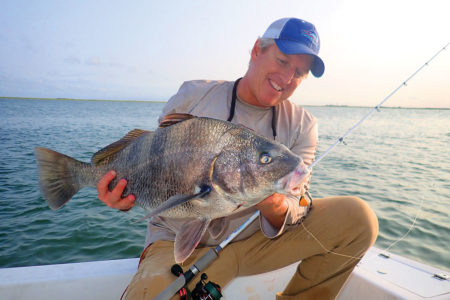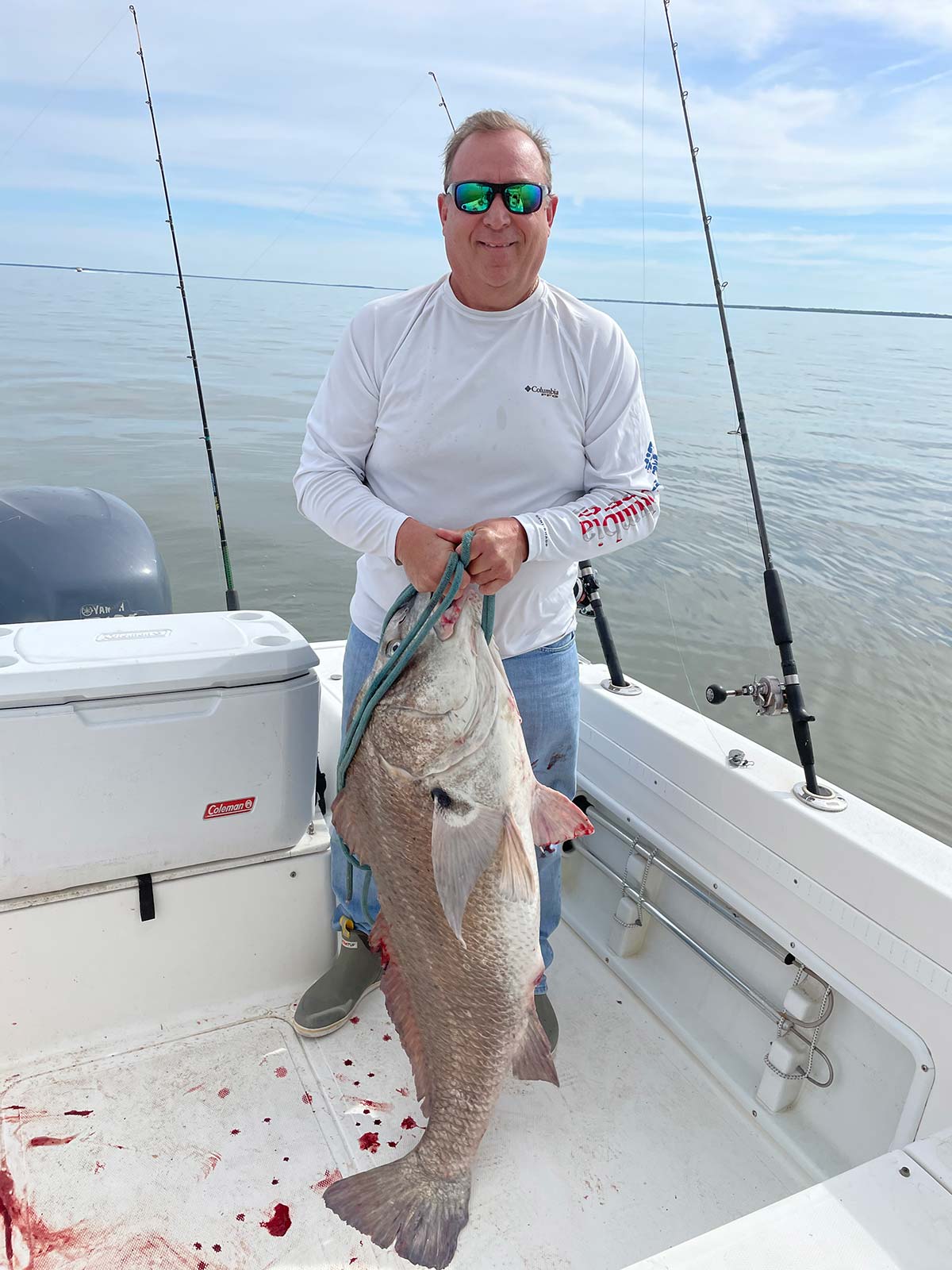
Applying tautog tactics to your spring drumming.
The black drum is one of the largest fish that we encounter on our inshore waters. Traditionally we have targeted these fish with heavy gear, as it’s easy to feel under-gunned when catching a fish weighing upwards of 100 pounds. Adding to the challenge of drum fishing is the fact that we are anchored in a fleet of boats in relatively shallow water with a very strong current, so being able to control a hooked fish is a concern.
Being from South Jersey, I cut my teeth while fishing the Delaware Bay for fluke, weakfish and striped bass. I never really targeted black drum until a few years back when I started jumping on my cousin Bill’s boat. Bill adjusted his skills and focused on the big black drum and he got scary good at it. Hence, I arrived on the scene fresh off of the tautog boat, with a handful of jigs and an idea for some fun with big fish on lighter than usual gear. Sounds like trouble.
These fish normally begin to show in the Delaware Bay in mid-April; the new and full moon in May has a good number of fish and fishermen on the water so this really gets things going. Some locals know of others bays that traditionally have a run of these fish during this same time frame as well; Absecon Bay, Great Bay and in areas of the Barnegat Bay always seems to see the same skilled anglers catching a few drum every year, but not nearly in the size and numbers seen in the big bay to our south.
Anglers from the Jersey side and the Delaware side alike both have excellent drum spots very close to their home ports.
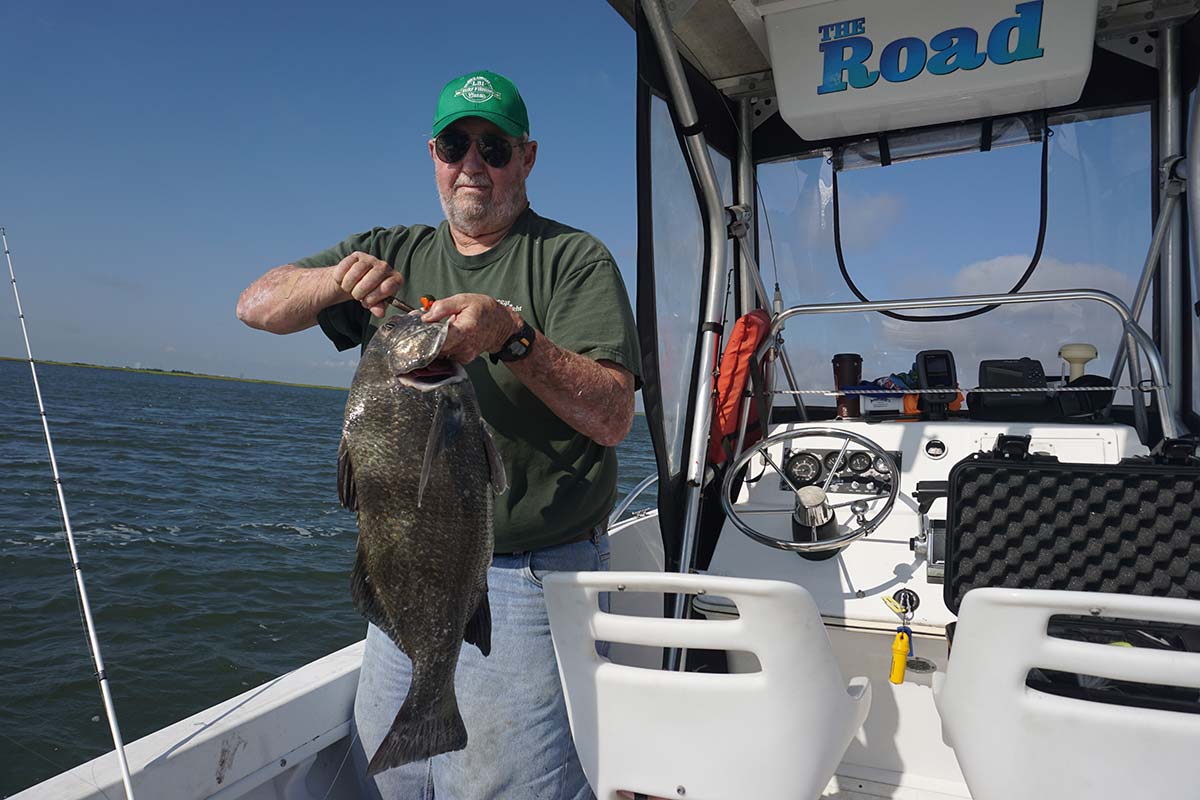
Jig & Rig Combo
Black drum enter the bay and seem to stay closer to shore early on. After they have been in the bay for a few weeks they will push out into slightly deeper water until they leave the bay later in June. Virtually any area between the Cape May Canal and Bug Light on the Jersey side is likely to have fish pushing through with the tide. The Delaware side of the bay is equally productive.
We usually fish in water between 20 and 30 feet deep or so. We are looking for some hard bottom or a channel edge to anchor over; some areas of hard bottom find our hooks often foul on old oyster shells. Shell beds are very fertile areas where microorganisms, crabs and small fish can feed and grow with some structure to offer some protection. It is a very fertile bottom that the drum seem to love.
The gear that you select for this battle is relative to how you fish. Meaning when we are anchored and the tide is flowing out, we fish five or six rods. First, we cast two spinning rods with 2-ounce MagicTail Gamechanger jigs baited with a half of a she crab each. Cast off about 50 feet off of the stern, one slightly left, the other slightly right. Closer in we toss baited rigs on conventional gear, left and right again. Off each side on the boat, we drop in more conventional rigs, but straight off port and starboard not far from the boat. This spread of baits covers a lot of area to intercept fish moving in with the tide.
When we get a fish on the spinning rod, we clear the other rods as needed, but we try to leave other baits in the water as long as possible as these fish normally arrive in wolf pack formation and multiple hook ups are a blast! This all happens fairly quickly; but no need, landing these large fish does take some time. A small 30-pound fish on the conventional set up may come to the net in a minute or two, but catch an 80 on the spinning rod and you’ll be busy for a while. These fish do not like the boat! As you battle your fish and he gets sight of the boat, he will turn on the afterburners and take more line; this may happen a few times until you get a shot at landing your fish.
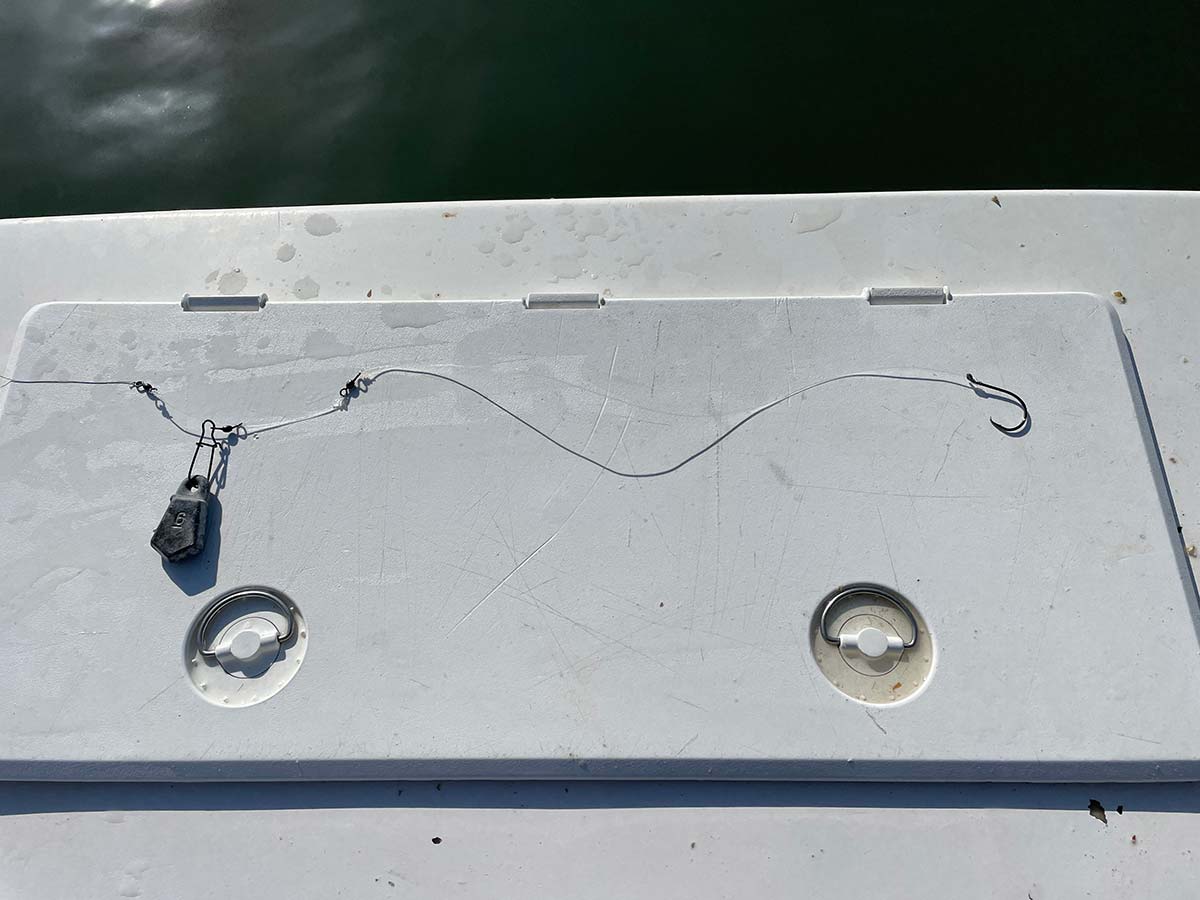
Your Drum Kit
Our gear needs to be exceptionally strong as these huge fish can put tremendous pressure on gear for an extended period of time. It need not be extremely heavy gear, but strength in the reel means the reel foot, handle, drag and gears must hold up. The rod needs to have an exceptionally strong reel seat, as well as the needed reserve power in the butt section of the rod.
Our rods of choice in conventional gear is the Century ProTogger with an Okuma Cavella two-speed reel. I’ve made the mistake of using my normal blackfish reel, but because we fish a fairly heavy drag my Saltiga 15 suffered internal damage. When sent in for service it was discovered that we actually twisted the main shaft of the reel. Too light of gear and too heavy of drag with too large of a fish will do that.
Spinning outfits get a bit sporty. A Century Weapon Mag Taper has incredible power and strength in a rod that doesn’t look as formidable. Light and sensitive in the tip, the power in this blank is much more than you would expect. The reel that has held up the best to this big fish abuse is the Tsunami SaltX 4000. Spooled up with 20- or 30-pound braid this outfit came off of my blackfish charter on the last day of April, and went back into the water with a she crab looking for drum! Add a 6-foot length of 50-pound leader material and tie on a 2-ounce jig and you’re ready to go!
Our conventional gear is rigged with 50-pound Daiwa JBraid 8, and 50-pound leader material. We use an 8/0 SaltX Circle hook and fish 6- or 8-ounce sinker on a simple slider that is in position between two swivels. It rarely fouls when cast and catches fish very well. These large sinkers are needed to hold each bait in their spread-out position in the strong current of the Delaware Bay. As the tide slacks out and turns, you will need to adjust bait placement as your boat swings as needed. We rig both the jig or circle hook with either a fresh skimmer clam or a half of a she crab. I cut the crab in half and remove the legs, putting the hook in a middle hole and out the top of the crab. Hooking the bait this way will prevent it from twisting in the current.

Buckle Up!
Fighting these fish can be an excellent test of an angler’s skill. Fishing from an anchored boat in a shallow water bay with strong tidal flow means that you’re going to have to do things a bit differently; fish this large will simply go where they want when they want, so developing a team plan will help you land each fish. When a fish is on, one angler is on the rod while the others clear other baits from the water so as to avoid tangles and break offs. Such coordination is a little like what happens when offshore in the cockpit when targeting tuna. It takes quick work and cooperation from everyone onboard to hook and land these behemoths.
Even this excellent quality gear will require skill on the angler’s part. A prolonged battle with a huge fish is a test to both parties engaged. This fight will be a mostly horizontal one as the fish will be away from the boat for the most part. Tighten your drag as much as you are comfortable and always keep heavy heat on the fish. As the fish gets closer, use side pressure on the rod to exhaust the fish as quickly as possible. Keeping the rod tip horizontal, use the middle and bottom portion of the rod to fight the fish. If he goes left, keep your rod low and too the right to apply maximum pressure on these fish. If he goes right, then you go left. Heavy pressure will keep the fish off balance not knowing from which direction he is being pulled.
If the fish is being pulled from one direction, he knows to swim the opposite direction to escape the pressure. By keeping him off balance you can shorten the battle for a quicker release so your crew can get the spread back out and catch more fish.
While some people enjoy eating black drum, I prefer to release them. We’ve kept and cleaned our share, but cleaning these fish is a chore, and the no-see-ums at the dock can be nauseating. The bigger drum often have worms in their flesh that I find extremely unappetizing. If we have someone out and they catch their first, or new personnel best, I will remove a scale from the fish when taking a few pictures. The scale will dry out making a memento to go along with the pictures of your awesome catch.
Just as April tog season comes to a close, grab your same gear and get on some black drum in May and June; employ a jig this spring, and you won’t overlook them ever again!
